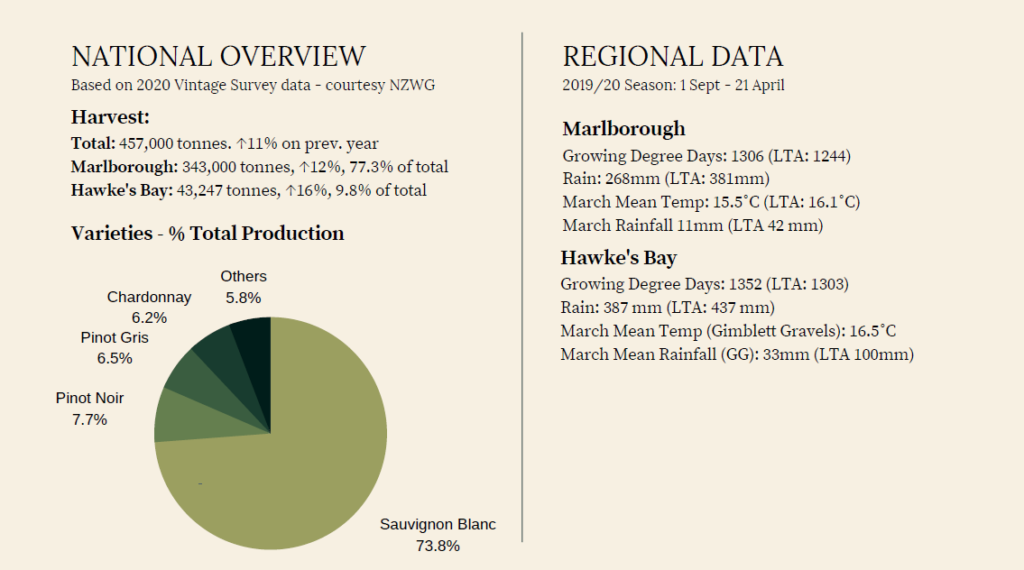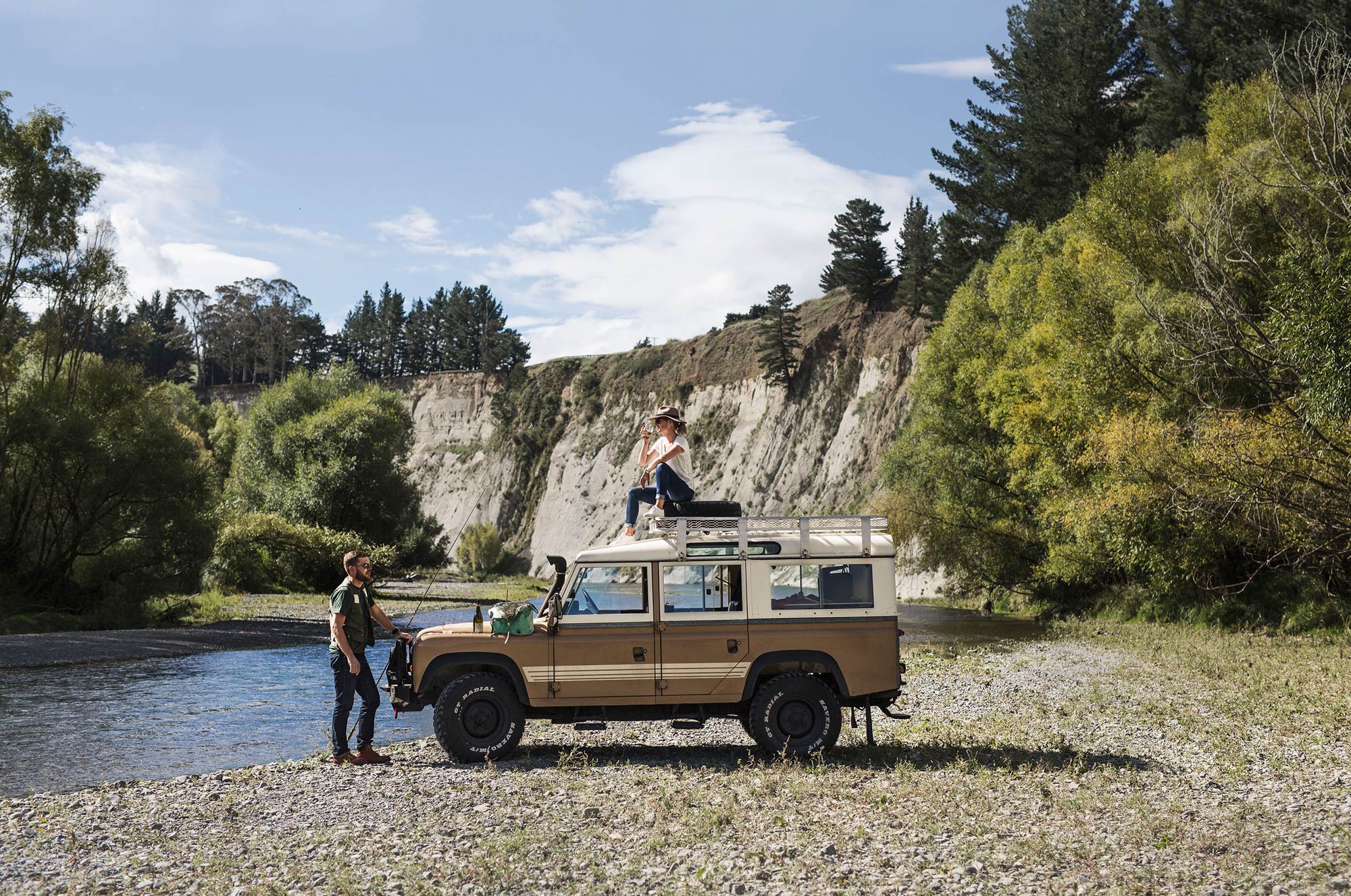
10 Apr V20: The Report – Marlborough
The latest vintage update from Sacred Hill Vineyards by Rebecca Gibb MW
While 2020 may feel like a ‘let’s start over’ kind of year, the Marlborough and Hawke’s Bay grape harvest gives all of us a little something to be optimistic about – talk is running hot about the potential of the V20 harvest.
For many of us, 2020 has not turned out quite as we had planned and that’s true of the New Zealand wine harvest. The conditions leading up to harvest might have been sublime but as the grapes entered their final ripening weeks, growers were faced with the very real possibility that they might have to walk away from their perfectly healthy bunches. At the crucial moment in the season, borders were closed, strict quarantine rules were imposed on those visiting or returning to New Zealand, and wine producers wondered if 2020 would go down as the vintage that wasn’t. That’s because in response to the COVID-19 pandemic, New Zealand took the unprecedented step of enforcing a nationwide lockdown at 11.59pm on 25 March, just days after the country’s most important wine region, Marlborough, started harvesting its signature grape variety, Sauvignon Blanc.
At the eleventh hour, the New Zealand government categorised wine operations as essential businesses, allowing the harvest to take place but with strict rules imposed, it was a vintage that will not be forgotten in a hurry.
“We were privileged to be able to harvest our grapes and make wine. We weren’t sure if we would be able to continue”, says Marlborough winemaker Kel Dixon.
“The grapes were ready about two to three days before the government imposed Level 4 [lockdown] so there was some fairly frantic harvesting, particularly as we weren’t sure if we would be able to continue so it was with relief when the industry was deemed essential.” For the most part, the 2019/20 season was cooler than the past two years but growing degree days were still above the long-term average, which meant harvest fell at exactly the time that the government ramped up its pandemic response. It was an unspectacular start to the summer for those looking to start their tan over the Christmas holidays with cool days and two significant downpours on December 16 and 19. But it was these rains that filled reservoirs and got the region through the first three months of the year; Marlborough registered the lowest rainfall since records began in 1930 and the Ministry for Agriculture declared a drought across large parts of the country in early March.
Just 20mm fell in this period compared with a soggy, ex-cyclone influenced 315mm in 2018. With such dry conditions, disease pressure was about as low as it gets.
While February was warmer than average, giving the vines the nudge they needed towards ripeness, the key harvest month of March doled out cool nights, dipping to a rather brisk 3˚C on March 18. This was crucial to the retention of the scintillating acidity that makes Marlborough Sauvignon Blanc so refreshing. The technical analysis provides the proof, says Dixon: “The pH of the Sauvignons in 2019 was around 3.2 to 3.25 but this year it’s about 3.05 to 3.15 and there’s a lot more grapefruit and zinginess, which I love.”
When it comes to Marlborough’s most important red, Pinot Noir, the variety seems to have more classicism in 2020 compared with the pale 2018s and the “crazy black” hue of the 2019 season.
However, one of the key developments in Marlborough Pinot in recent years is increased vine maturity which has led to greater natural skin tannin. “I’m going to lay off the new oak because the wines don’t need it,” says Dixon, as the tannins are already providing texture and savoury notes.
It was certainly not a typical vintage for Sacred Hill’s international cellar crew: having travelled to the land of the long white cloud from North America and Europe looking for the quintessential Kiwi experience, it was not quite what they anticipated. “One of the weirdest things is we would normally go to the pub and chat with other winemakers about how things were going but we all went home at the end of the shift; there was no cross over between the day and night shift.”
Restrictions meant the team could not send off their hardworking cellar hands with the usual end-of-harvest party. The camaraderie and after-hours sociability is what keeps many addicted to the 12-hour madness of a grape harvest. However, with borders still closed post-harvest, locals and the international vintage crew have been enjoying the rare luxury of having New Zealand to themselves.
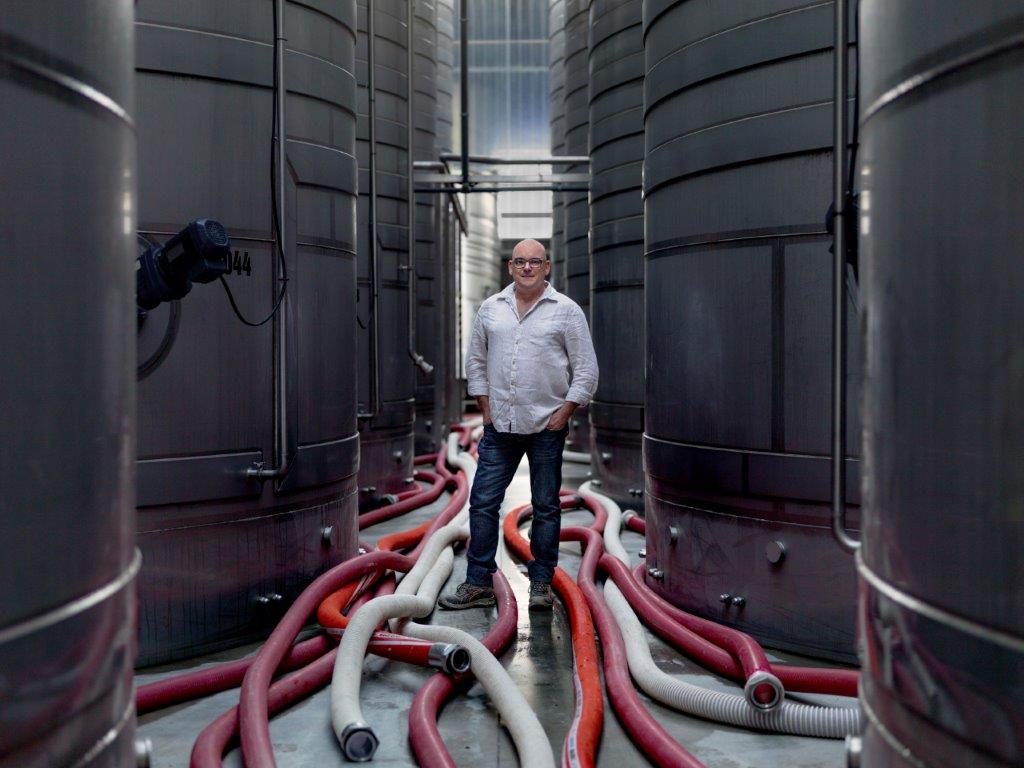
Kel Dixon, Marlborough Winemaker 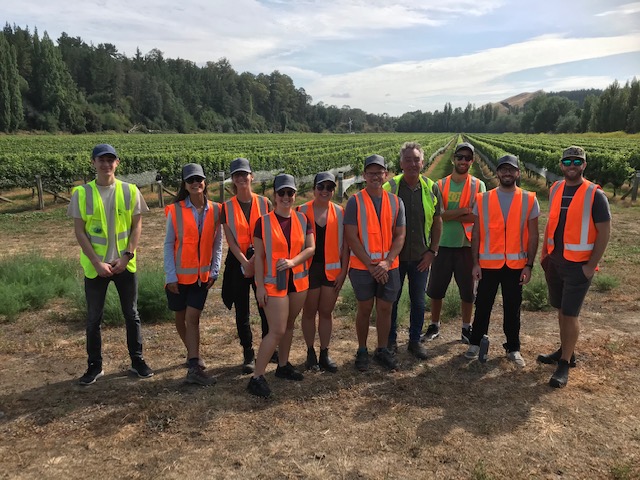
Sacred Hill’s Cellar Crew touring the vineyards (prior to lockdown) 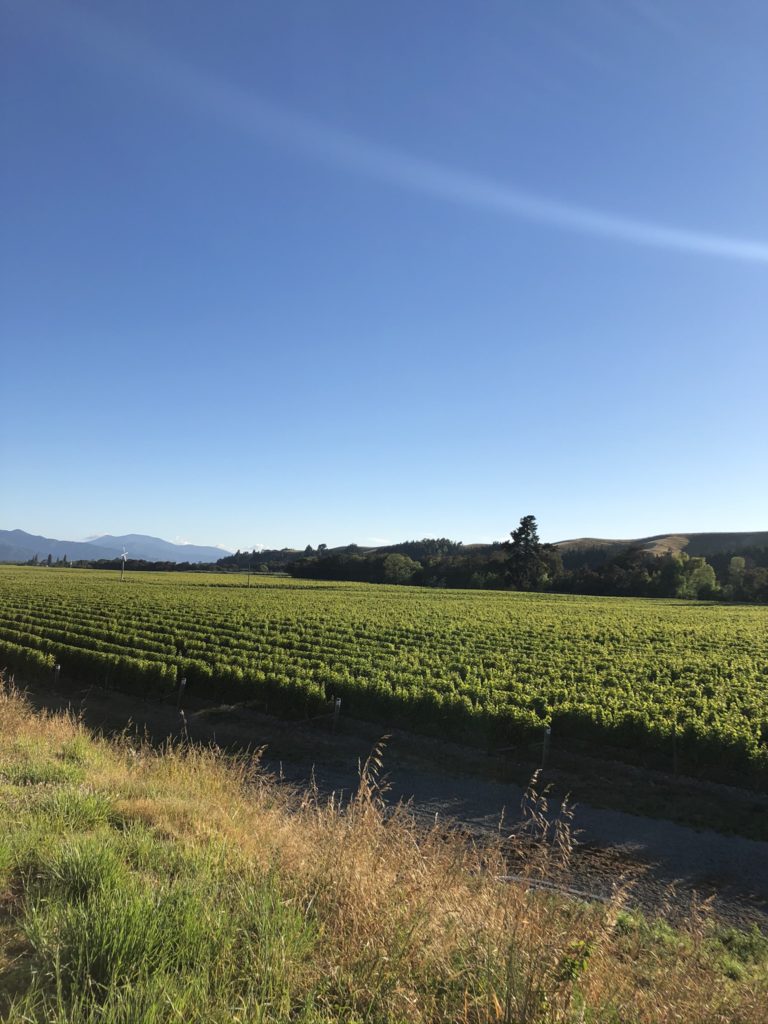
Hell’s Gate Vineyard, Marlborough 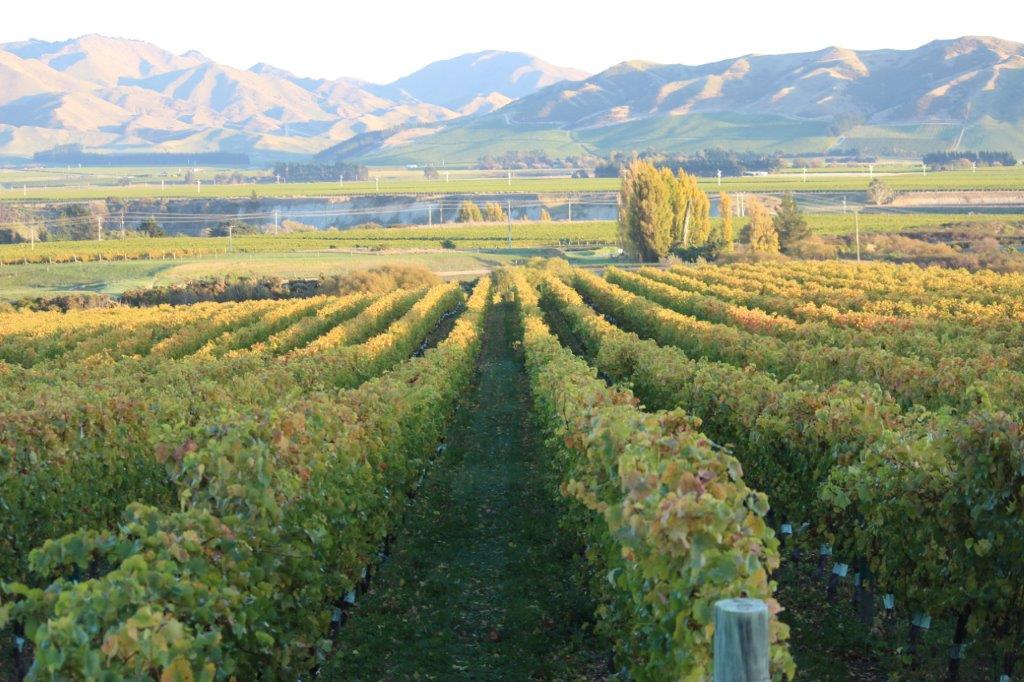
Singing Bridge Vineyard, Marlborough 
Singing Bridge Vineyard, Marlborough 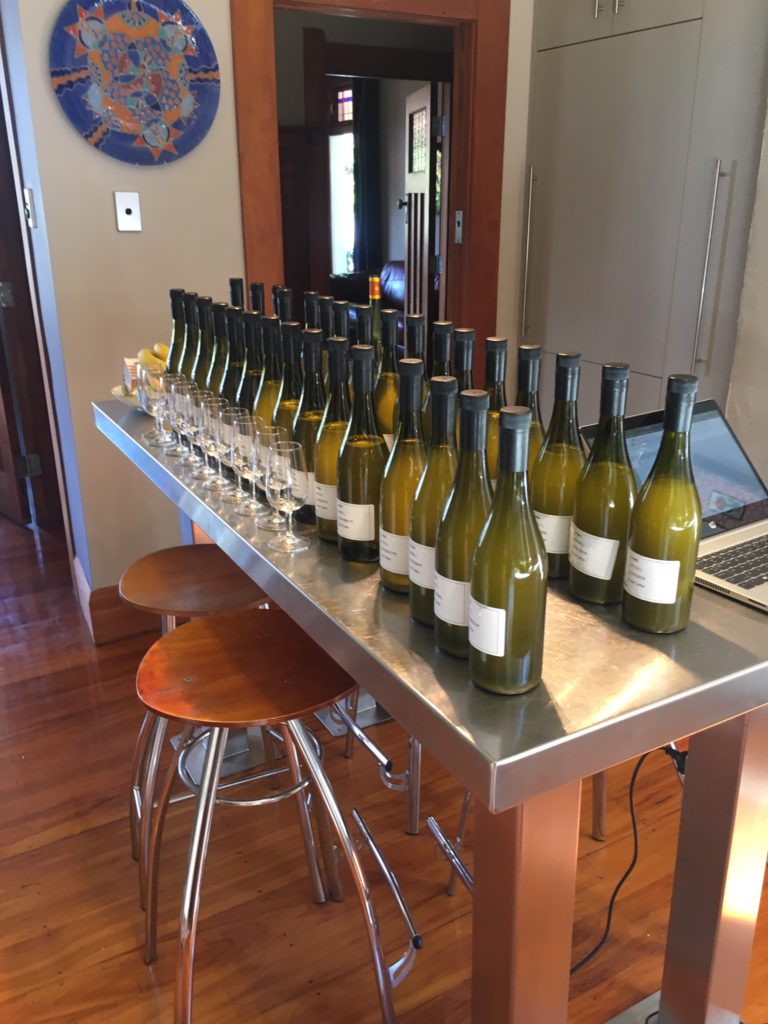
Sauvignon Blanc blending (from Kel’s House)
